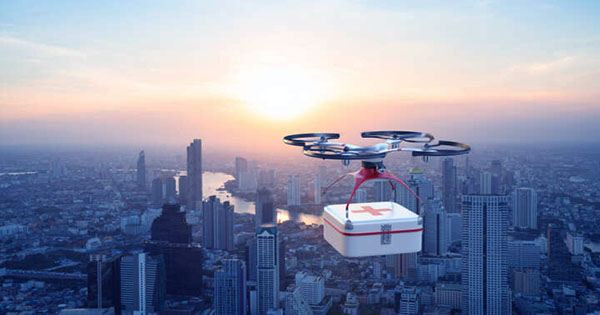Regardless of the application, modern communications technology follows a consistent formula: devices convey signals and information through data centers, towers, and satellites on their way to their destination. The speed at which information moves depends on the effectiveness of the communication, and there are many things that can slow down that voyage, including geography, the weather, and others.
Researchers at The University of Texas in Austin have developed a novel technology that can give more secure, dependable communications despite obstacles like bad weather. This might increase self-driving car vision capabilities, support military communications in difficult terrain, and speed up wireless data for eventual 6G networks.
The project’s director and professor at the Department of Electrical and Computer Engineering at the Cockrell School of Engineering, Ray Chen, compared it to TV satellite dishes that malfunction or become blurry in bad weather. With regard to communications technology, the same thing is possible, and Chen wants to address this issue.
Chen’s device works in the mid-infrared region of the light spectrum, which enables signals to pass through weather conditions like clouds, rain, and other weather to reach their intended destination without emitting a lot of light.
“Low light loss means signal can travel further, and through the earth’s atmosphere, with better integrity and less power consumption,” Chen said.
Chen’s findings were recently published in the journal Optica.
Communications that are weatherproof weather-resistant chip The tool is an indium phosphide chip with beam steering capabilities, which is the process of rerouting light toward a certain target. The idea minimizes interference and saves power while allowing signals to be carried more accurately than in other ways.
However, beam steering has flaws that prevent widespread implementation; one of these is that devices can only guide light in specific directions. Chen makes the analogy of someone with limited peripheral vision.
The LIDAR devices have to spin because of the limited field of vision. And any time you rely on a moving part, there is a risk of it breaking. The chip Chen created doesn’t require moving parts because of its wider field of vision. And fewer blind spots in the technology increases safety in situations where momentary lapses can prove dangerous.
Ray Chen
However, Chen’s invention lacks moving elements and side lobes of light that trail off in different directions and reduce efficiency and instead has significantly wider angles for directing light that increase the range by around 30 degrees in comparison to the alternatives.
“For beam steering to be safe, you want to have a full view, you don’t want to have a bunch of blind spots,” Chen said.
Light Detection and Ranging (LIDAR) technology is a common component of self-driving automobiles, allowing them to sense their surroundings. These often take the shape of huge apparatuses connected to the tops of cars with rotating arrays.
“The LIDAR devices have to spin because of the limited field of vision,” Chen said. “And any time you rely on a moving part, there is a risk of it breaking. The chip Chen created doesn’t require moving parts because of its wider field of vision. And fewer blind spots in the technology increases safety in situations where momentary lapses can prove dangerous.”
Everything from military vehicles to satellites to skyscrapers can incorporate the chips. Chen is attempting to give the environmental sensing apparatus artificial intelligence.
Without aids like night vision goggles, humans cannot see in the mid-infrared region of the light spectrum, although equipment in that range may detect things like gas leaks and smoke stack emissions.
These gadgets can boost internet speeds in large cities where it is not viable to drill deep underground to lay fiber lines. Free-space optical communication, a technology that enables wireless data to fly through the air using light, can be made possible by placing them atop skyscrapers.
The gadget needs to be field-tested and its packaging needs to be improved in order for Chen to use it in free-space optical communications, which is the project’s next significant step.
The Air Force Research Laboratory and the Office of Naval Research provided funding for the study.
















